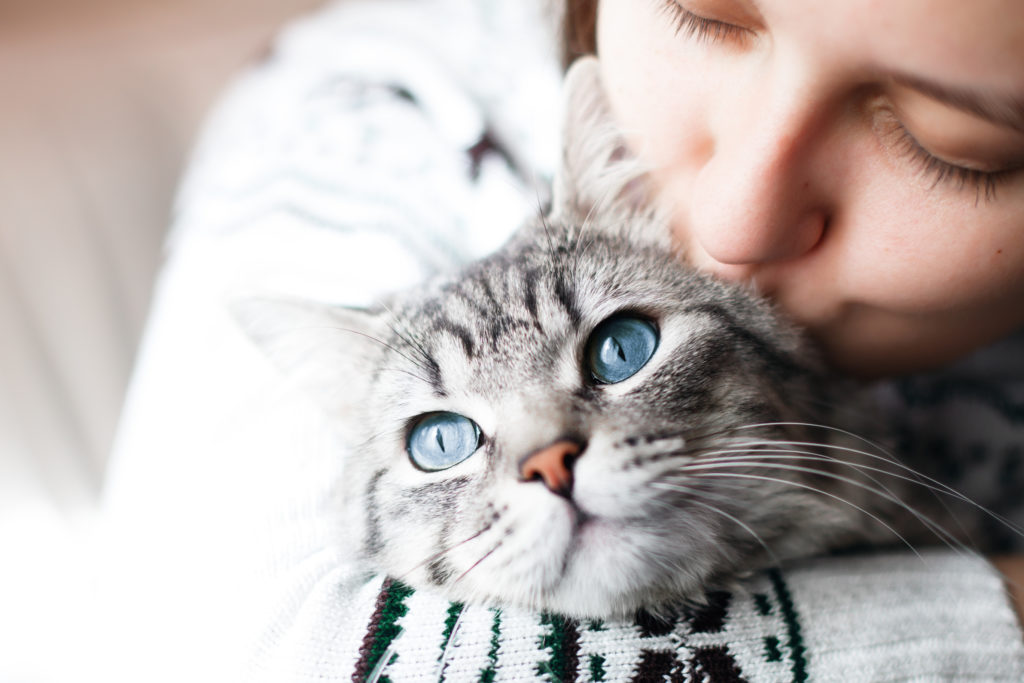Previously, we discussed an overview of the Fear Free Certification program for veterinary professionals, including what the program is, how to find a certified professional, and why the program is valuable. This time, we will look into how we as owners can help to make our pets more comfortable prior to their appointments. I have some personal experience on this front, having both a cat and a dog who are not always thrilled to “come to work with Mom.”

Fear Free has a portion of their website dedicated to owners with helpful information geared toward making the pre-appointment time the most comfortable possible, and also some ideas for alterations around the house to decrease stress levels. Another helpful resource is the Indoor Pet Initiative provided by The Ohio State University College of Veterinary Medicine. This website combines the experience of multiple veterinarians dedicated to improving the lives of our pets.
Thinking back to the last time you were getting ready for a visit to the vet hospital, for an annual check up or a more urgent visit, what do you think was the most stressful part for your pet? Most people would think of things like the exam and the exam room, the wait in the lobby, and the car ride to the hospital. While those can all add to the stress of a vet visit, one of the most stressful parts can be getting out a cat’s carrier in preparation for the visit or a change to the daily routine for a dog. They have no idea why something is different, while you’ve been thinking about it and preparing for it for a period of time.
This bulleted list includes some things that we can do to help reduce stress in each of these areas and improve the comfort of our pets.
Keeping their carrier out in the living space at all times. Instead of getting the carrier from the back of a closet or the basement where it has been sitting since the last time it was used; leaving that item out allows our pets to become more comfortable with it. It becomes a part of their daily environment, it smells like them, and they can choose to spend time in it or around it.
Using pheromones. Canine (DAP) and feline (Feliway) versions of pheromones exist in a spray and plug in diffuser form. These pheromones mimic those made by mother dogs and by cat cheek glands. These can help to decrease signs of fear, anxiety, and stress and can decrease unwanted scratching behaviors in our cats. These can be applied to bandanas and harnesses, carriers and blankets, the car and even ourselves to improve their comfort. We should wait 15 minutes before placing our pets in an enclosed space with the pheromones applied.
Using treats to aide in getting in a carrier or the car. Any delicious treat can improve the comfort of the experience of going to the vet. Imagine if you could toss some delicious cat snacks into a carrier and they walked right into it. Or imagine if your dog jumped into the car to enjoy a special treat regardless of the destination. This can take some time and small steps to achieve this goal.
Keeping the car comfortable. While we may like our certain type of music or temperature our pets may not be comfortable with these choices. Studies have shown that classical music can improve comfort. We can also decrease the level of a fan if a carrier is on the seat or increase it if there is less airflow to the back seat of a car.
Advocating for them in the lobby or exam room. You are the voice of your pet and you know what makes them comfortable or nervous. Something as simple as asking to be placed directly in an exam room to avoid the lobby or asking another owner to give your pet some space can be very helpful. Cats prefer to be higher, so placing them on a chair turned toward you (as opposed to facing the lobby) can improve their comfort level. If you know that they prefer their feet not to be touched or for their belly not to be rubbed; tell the veterinary staff that. They may not know your pet’s preference but can make note in the file for future visits.
These are just a few examples of how we can improve the comfort of our pets at home, during the ride to the hospital, and while at the vet hospital. There are many more included in the resources below, including instructions on how to access the Fear Free Happy Homes community. This provides a discussion group for members to share their struggles and successes, ask questions and provide support, and a central place for news regarding this topic.
Next time, we will explore what a Fear Free Certified Practice looks and feels like.

Meaghan Ropski, DVM
Fear Free℠ Certified Professional
References:
“From Fearful to Fear Free℠” written by Marty Becker, Lisa Radosta, Wailani Sung, and Mikkel Becker
